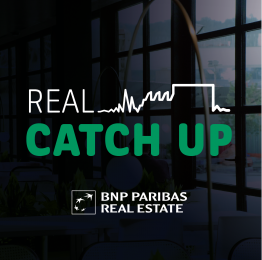As people returned to the office after a substantial period of working from home, it was unsurprising that their expectations had changed. When, for many, working from home presented various advantages including added levels of comfort, and for example the benefit of working from an outdoor space, coming back to the office suddenly needed to be more advantageous.
Laying out the idea of the e-office, a concept which is inspired by our relation to e-commerce, Csongor Csukas outlines the growing need to bring together multiple interactions into our working lives. As he points out, “It’s a kind of comparison to e-commerce where “e” goes for a mix of uses. In fact, the buyer five years ago, no longer needed to go to the store to buy products. The same now goes for teleworking, which has shown that it is possible to carry out some working tasks at a distance. Offering a new alternative to addresses the crucial question of attractiveness. What would drive the customer to go back to the shop? And why would employees go back to the office for eight hours a day if they now have the choice to work from their garden? To justify bringing customers back to the shop, the retailer must offer more than just a product and that means the experience. In the same way, the company must go beyond a simple occupation and or use of the workplace, it must offer something else, namely a cultural, collective and intellectual experience.”

What is the e-office?
How has METAL 57 priortised the occupier experience?
The building of METAL 57 in Boulogne-Billancourt on the outskirts of Paris, is an example of how services have been carefully thought out in order to provide an experience that is different to that of working from home, an experience that gives employees something that they can’t have within the home office.
In this podcast episode, Csongor Csukas takes us around METAL 57, detailing how services have been carefully integrated in a way that give occupants reason to interact with the building.
As he explains, “The experience needs to be coherent and I would describe it in three dimensions.. When a visitor or employee arrives at the building, they will firstly experience the architecture and the design of the building. Secondly, they will experience a kind of service, a human touch – is there a hostess to welcome them personally? Finally, the third dimension is E-xperience with a big “E” which is the digital experience. Is there access to a digital experience or not? These three dimensions; design which goes with how the building is fitted out, the second is service with the human and finally the digital must be provided and managed simultaneously in order to create a strong experience which is recognised for its coherence.”


To justify bringing customers back to the shop, the retailer must offer more than just a product and that means the experience. In the same way, the company must go beyond a simple occupation and or use of the workplace, it must offer something else, namely a cultural, collective and intellectual experience
-
 Episode 9
Episode 9What are the investment trends in real estate in 2022?
-
 Episode 10
Episode 10Integrating urban logistics into our cities




